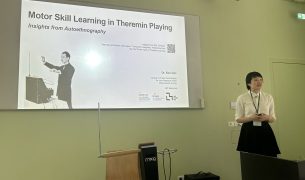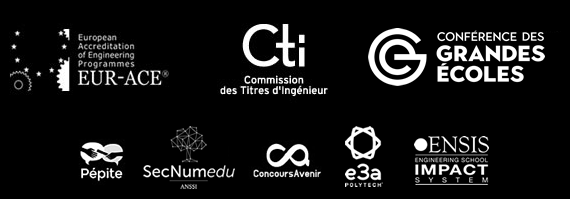The applications of big data and machine learning are near-endless when it comes to tourism intelligence. Theo, a data scientist who graduated from ESILV, is the co-author of a research paper on big data tourism prediction and analysis.
The paper “Hidden Markov Model to Predict Tourists Visited Places” co-authored by Théo Demessance, ESILV alumni, Chongke Bi, from Tianjin University, Sonia Djebali and Guillaume Guérard, from De Vinci Research Center, was presented at the 22nd IEEE International Conference on Mobile Data Management in Toronto, Canada. IEEE (Institute of Electrical and Electronics Engineers) is the world’s largest technical professional organization dedicated to advancing technology for the benefit of humanity. Theo’s contribution to this research project comes as a part of his dual-degree Master’s in Data Science with Tianjin University.
Leveraging big data to understand tourism behaviour better
In 2019, World Tourism Organisation UNWTO recorded 1.5 billion international tourists, 4% more than the previous year. Tourism is one of the most critical areas for the world economy. It is also considered to be one of the fastest-growing industries in the world.
In this economic context, the understanding and knowledge of travel motivations and the anticipation of tourist behaviour play an essential role in tourism marketing. It can lead to the recognition of demand, make targeted advertising, and help tourists make decisions.
With the recent booming of digital tools and mobile internet technology, alternative data sources to understand tourism behaviour have emerged. For example, users of social networks like TripAdvisor, Booking, Facebook, Instagram tend to share openly and frequently photos, reviews, recommendations, and videos on tourist places.
Thus, when users share photos or reviews, geographical information is included. These geolocated data represent tourism and sociological views. Analyzing the behaviour of tourists represents a critical challenge to monitor their movement and spreading in a given area better. We can subsequently adapt supply to demand, recommend a stay to a tourist, provide relevant information for the tourism industry and management.
Big data & statistics to improve decision-making tools in tourism
“In this paper, we focus our reviews on the prediction of tourist movements. This paper addresses the problem of modelling and predicting the future movement of a tourist based on his present and past practices in a given area.
Based on the geo-localized and temporal data information, we propose in this paper a model for predicting future tourist movement by analyzing the time sequences of places visited by a set of tourists.
Our approach is to learn tourist’s practices from a set of temporal sequences of places through various methods to handle the difficulties due to big data. The proposed method uses a machine learning method building a Hidden Markov model representing the whole data set.
The model can produce predictions as a recommendation of future places to visit. Users can also update this model to new data. Our model is built from the whole data without reducing its size and without extracting a mathematical model.
Thereby, we propose a new algorithm for automatic learning of grammatical inference to reduce its complexity in the context of big data. Moreover, this algorithm is designed to maintain all behavioural possibilities on the dataset. The principal contributions of our works are:
- A method to establish sequences representing a unique stay of a tourist from the dataset
- A new method of grammatical inference for processing a vast dataset
- A flexible and relevant decision-making tool to represent all tourists’ movements in a data set. This decision-making tool can predict future visited places as recommend places to visit.”
























